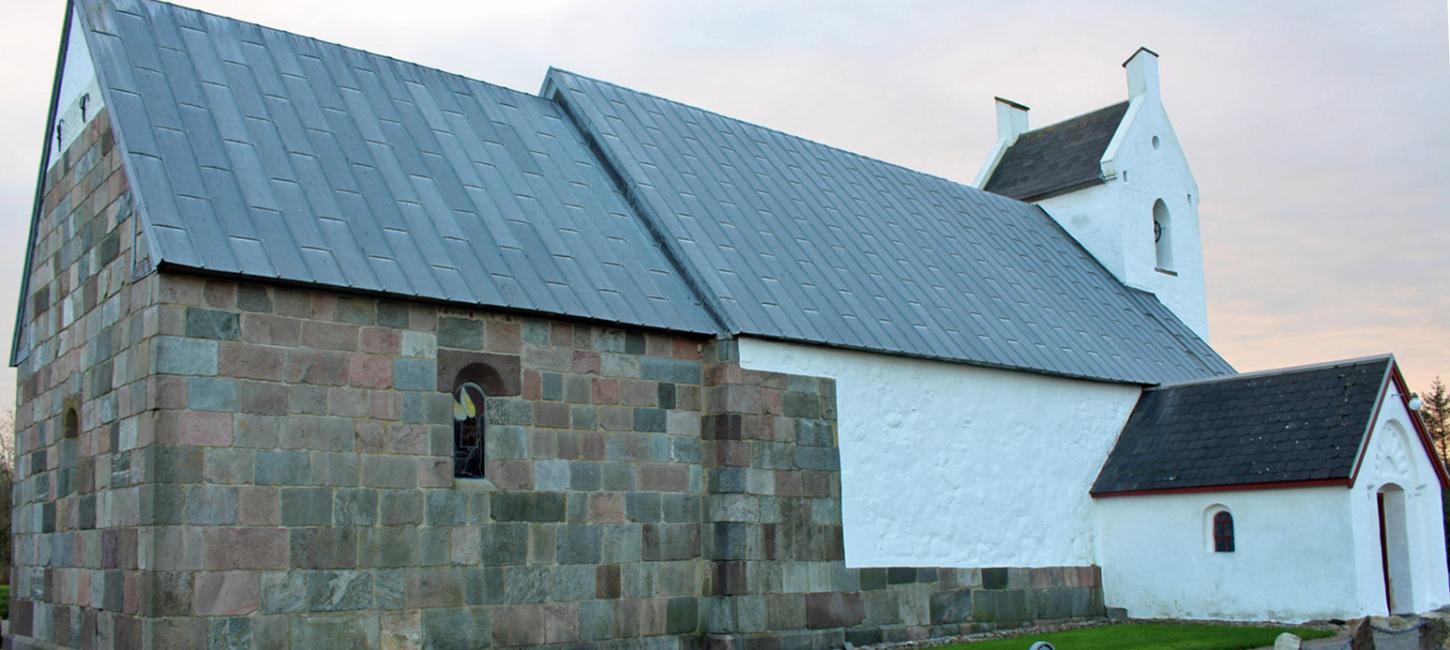
Fousing Church
Fousing Church dates back to around 1200 and was built in the Norman style with later extensions. The church has a very interesting link to geology because of the many large blocks of rhomb porphyry that have been used for its construction.
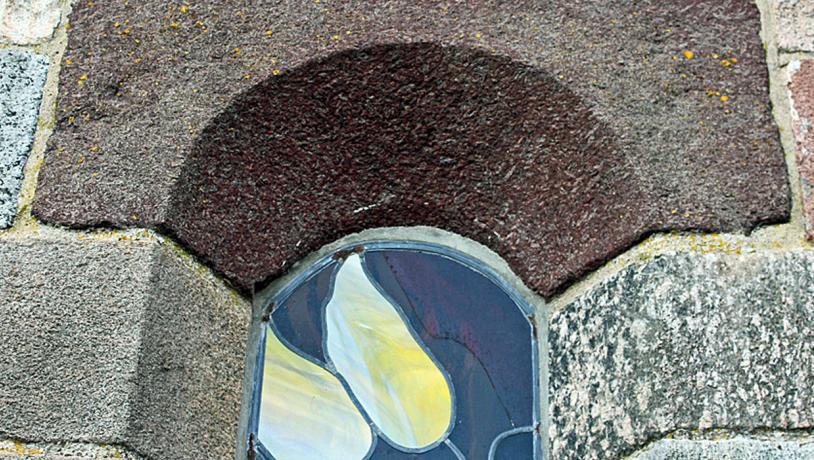
Photo:Søren Raarup
The Buildings Styles
Fousing Church was built in the Norman style to which a Gothic style porch and tower were added in about 1500 and 1550 respectively. The church was built in two phases. The first phase, consisting of the chancel and the first 3 m section of the nave, was built using ashlar stones, whereas during the second phase ashlar stones were only used for the south wall and raw fieldstones for the north wall. The only remaining original windows on the east and north walls were bricked up, but that on the north wall was reopened in 2005 and is now occupied by a glass mosaic.
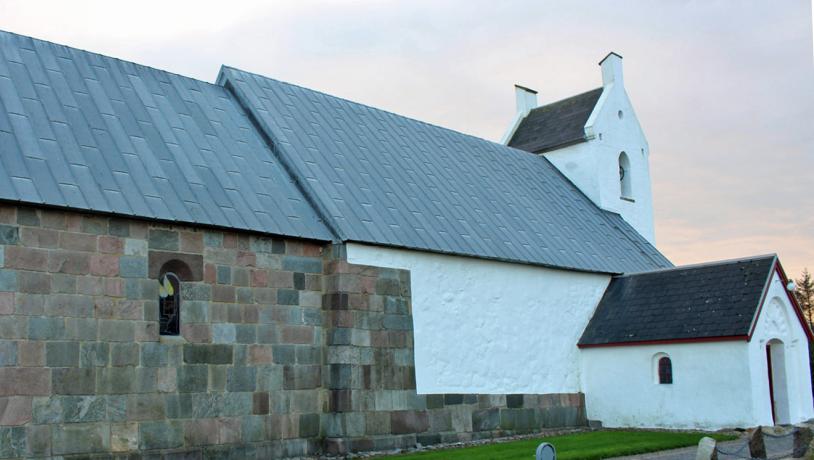
Photo:Søren Raarup
The Placement of the Parish
Fousing Church is in a parish that was not very affluent. This is evident from the mixed style of building and later reports of its decay and repair. The parish is quite small and the western portion consists of part of a sandy outwash plain, followed to the east by a sandy hill island. Only the eastern roughly 25% consists of till soil. The church and several farms are located on sandy melt water soil which seems rather odd, but the explanation lies in rich grazing and hay harvesting possibilities in the surrounding valleys.
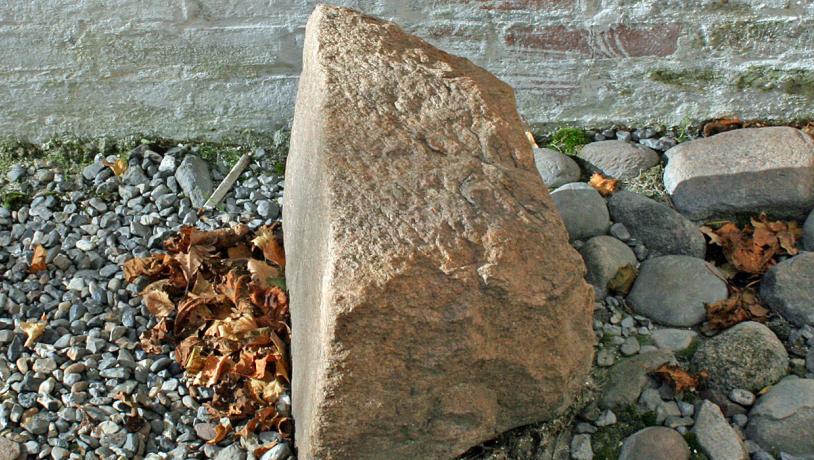
Photo:Søren Raarup
Gathering of Fieldstones
From a geological point of view Fousing Church is of special interest because many large blocks of rhomb porphyry were used as ashlar stones. Stone churches began to be built in Denmark towards the end of the 1000s. Local building materials were used which means essentially fieldstones. Bricks were not used until the late 1100s. The landscape was littered with erratics left behind when the ice melted. Some of them are from the last ice age, while others on the hill islands are from earlier glaciations. The cultivated areas had already been cleared of stones which lay in piles or in stone walls around the fields. There is no doubt that there were many erratics scattered about in the landscape.
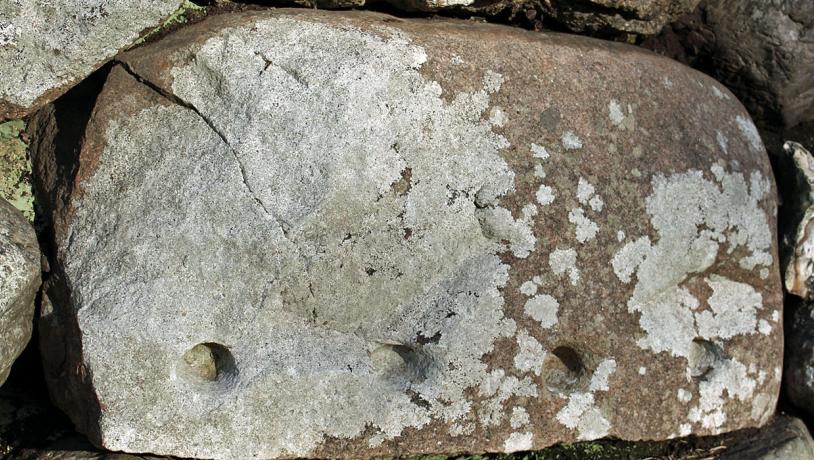
Photo:Søren Raarup
Building the Church
The area surrounding each church was scoured for suitable boulders. Between 1000 and 2000 were needed to build a church. Many slightly smaller raw fieldstones were also needed for the inner walls. The gaps between the box-walls were filled with a mixture of small stones, waste material from the ashlar dressing and mortar. The walls are about 1 m thick, so many stones were required! Splitting and dressing of the boulders was probably carried out by stonemasons from Germany. Cleaving the large boulders in particular required expertise and experience. Traces of their work can often be seen in the ashlar stones and especially in the walls of the churchyards.
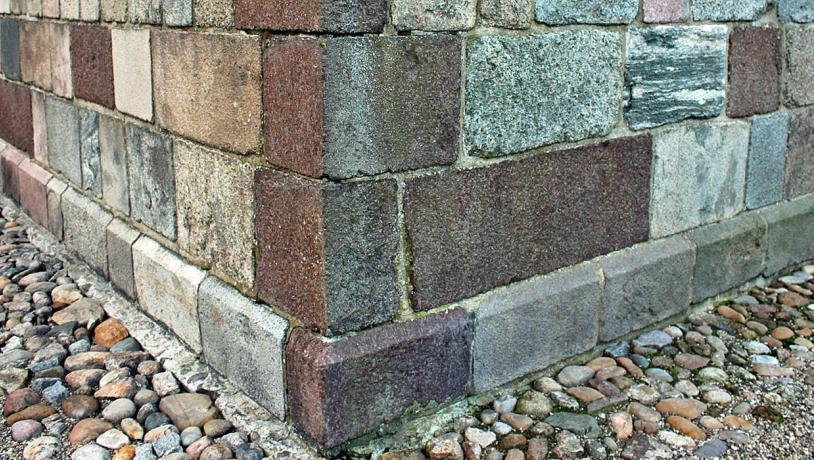
Photo:Søren Raarup
The Rare Rhomb Porphyry
Large blocks of rhomb porphyry are quite rare in western Jutland and they are not generally used as ashlar stones in church walls – with a very few exceptions. Fousing Church is remarkable in this context in that it has more than 40 very large ashlar stones of rhomb porphyry in its walls. It is noteworthy that two nearby churches also contain rhomb porphyry ashlar stones; Ølby Church has about 20 that are somewhat smaller than at Fousing, and Gimsing about 10 that are about half the size of those at Fousing. It appears that there was special delivery of rhomb porphyry by ice from Oslo to this area.
Larvikite is a characteristic plutonic igneous rock from the Oslo region. Larvikite is geologically closely related to another characteristic rock type – rhomb porphyry. Larvikite crystallised from molten rock (magma) deep below the surface. But occasionally this magma reached the surface where it emerged as lava from a volcano. This lava solidified to rhomb porphyry. Together with blocks of larvikite, rhomb porphyry was transported by glaciers and deposited in western Jutland. The volcanic rock rhomb porphyry did not survive transport by glaciers as well as blocks of larvikite. Rhomb porphyry is one of the many types of stones that can be found on beaches in the area.